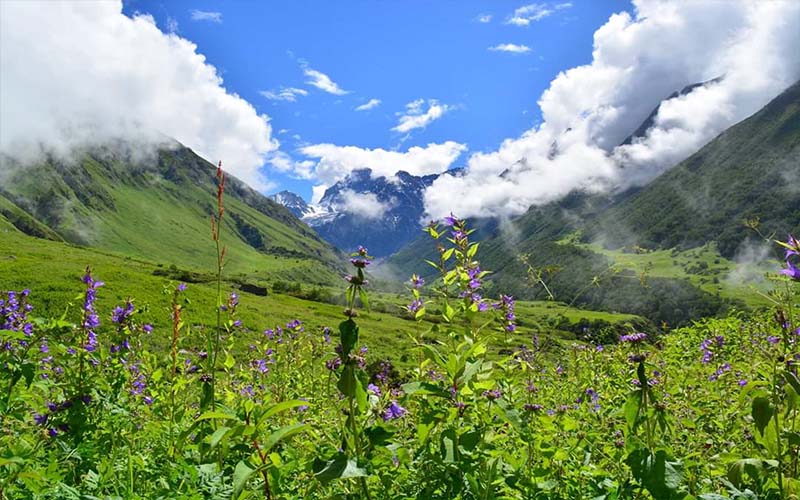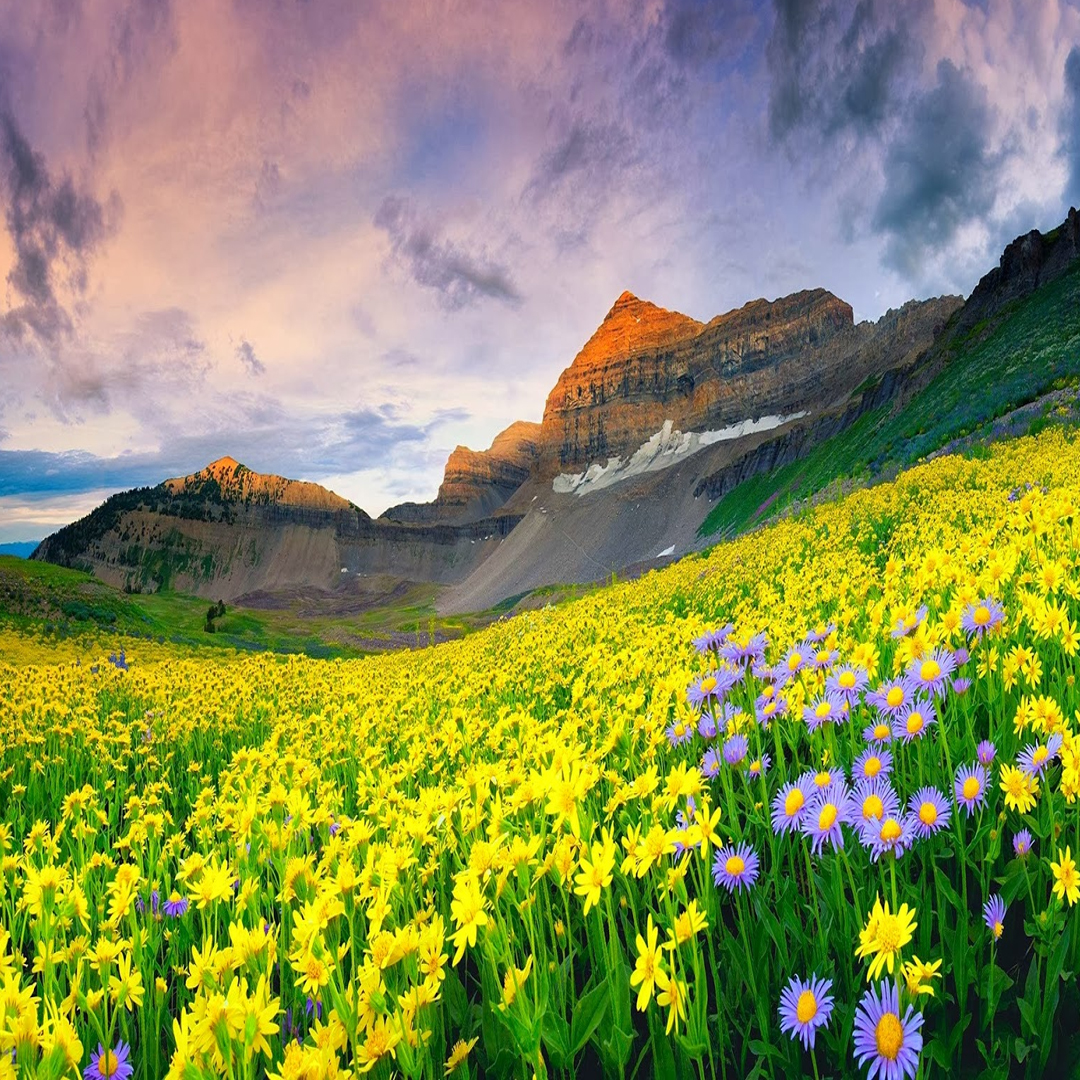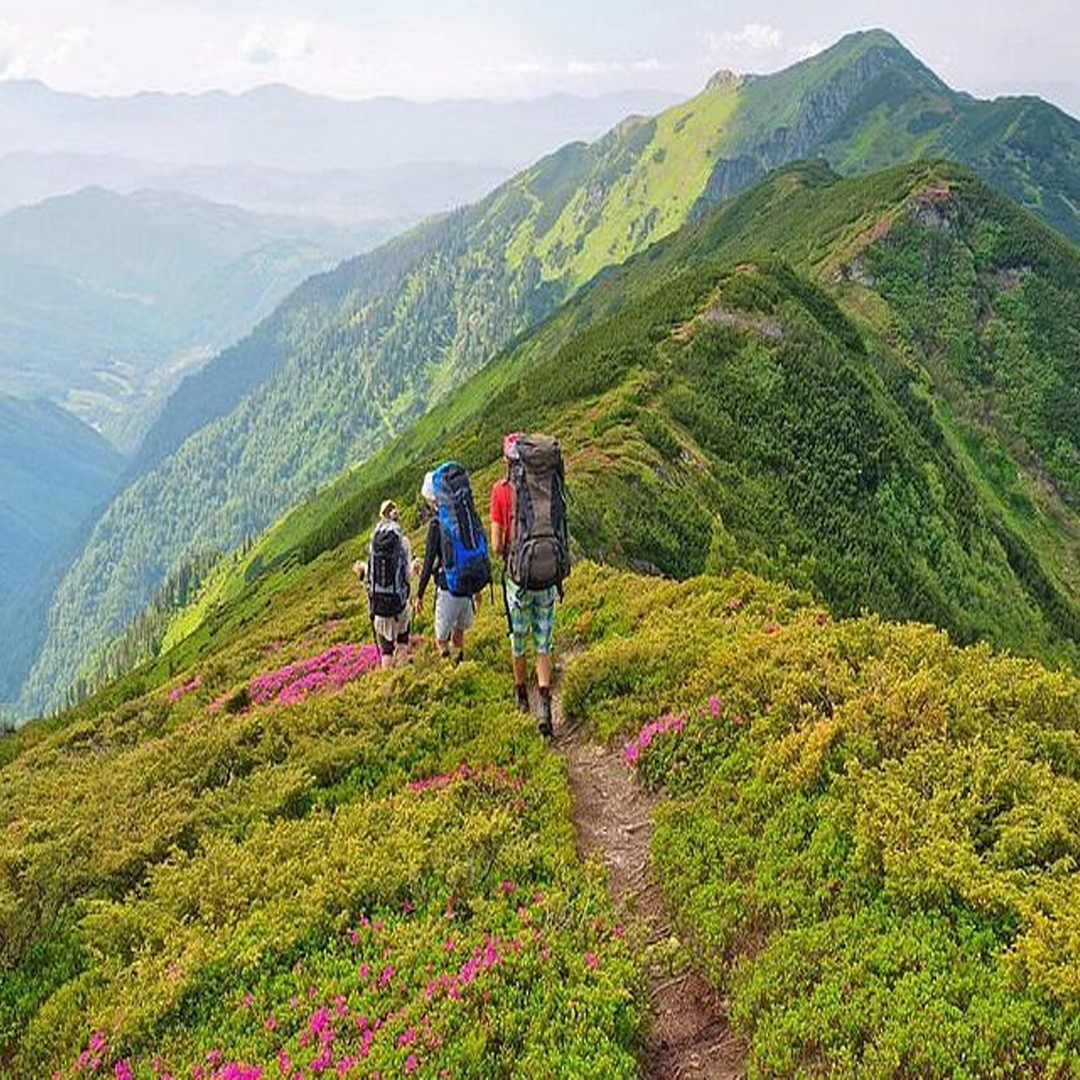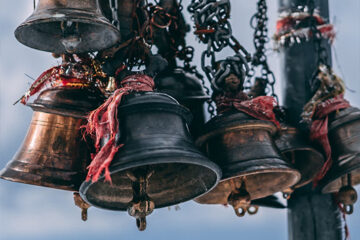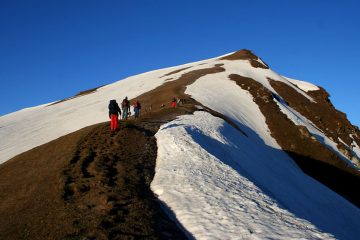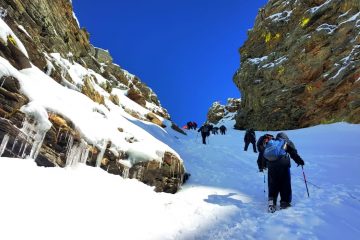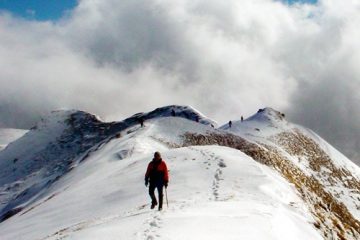Valley Of Flowers Trek
The Valley of Flowers trek is one in all India`s maximum famous treks with inside the Himalayas. People who haven`t even stepped into the Himalayas, have heard approximately the Valley of Flowers trek.
But there’s a stable motive in the back of Valley Of Flower`s mythical popularity – it’s far one in all India`s oldest recognized treks.
In 1980, the Indian authorities created the Valley of Flowers National Park, and later in 2002, it became identified as a UNESCO World Heritage Site. This driven Valley of Flowers at the bucket listing of trekkers from across the world.
Having stated that, you have to word that the Valley Of Flowers trek isn’t always easy. It is a mild degree trek, with barely longer hiking days and a steep ascent to Hemkund Sahib to be able to undertaking your endurance.Considered one of the maximum stunning treks withinside the world, the Valley of Flowers trek is positive to go away you mesmerized with breathtaking perspectives. At an altitude of 3250 m this trek will provide you with Panasonic perspectives of the Himalayas and a few stunning vegetation and fauna.
Valley of Flowers trek is one in all India`s maximum famous treks with inside the Himalayas. Its tough now no longer to face in awe and attraction with the splendor wherein nature expresses herself.
It`s a mild trek that gives an extraordinary get right of entry to to Uttarakhand Himalayas that has an expanse of valley blanketed with flowers. It is likewise taken into consideration a super trek for the primary timers. One additionally get a danger to go to the very best pilgrimage region of Hemkund Sahib.
Trek Highlights
The monsoon months July, August and September are considered the highest for visiting the Valley of Flowers. More than 500 species of flowers can be seen when visiting this valley during these months. This is the reason that this valley has become a famous tourist destination for horticulturists and flower lovers around the world. Brahma Kamal blooms in this valley of flowers in the month of September, which many are not destined to see.
What to see in the Valley of Flowers:
This valley is surrounded by snow-capped mountains, in which more than 500 species of flowers can be seen. The region is also home to a variety of endangered animals such as the Asiatic black bear, musk deer, snow leopard, brown bear and red fox.
The area of this national park is 87.50 sq km. It is located at an altitude of about 3352 meters (11000 ft) – 3658 meters (12000 ft) above sea level. This park is about 8 km. long and 2 km. is wide.
The length of this valley is about 3 km. and the breadth is 500 meters (0.5 km). A narrow road has been built between the flowers to roam in this valley, so that you can easily go to all the places of this valley by this road.
How much is the entrance fee to visit the Valley of Flowers
Indians : INR 150
Foreigners : INR 600
Before going inside this valley, you will have to register, for which you will have to give an ID card, only then you will be allowed to enter.
The Valley of Flowers is located in the Chamoli district of the Garhwal region of Uttarakhand state, India, which is surrounded by mountains. It is mainly a national park, named ‘Valley of Flowers National Park‘, and the Valley of Flowers is situated inside it. The valley was first explored by Frank Smith and his partner RL Holdsworth, a British mountaineer by profession. When these people were returning from their successful expedition in 1931 AD, they lost their way and came here attracted by the fragrant flowers present in this valley. Attracted by these beautiful views of flowers, Frank Smith named it “Valley of Flowers“.
The valley of Flowers is one of the most prominent tourist destinations in the state of uttarakhand. Where more than 500 species of flowers are seen in the month of monsoon.
The Valley of Flowers is one of the most prominent tourist destinations in the state of Uttarakhand. It is primarily a national park of Uttarakhand, where more than 500 species of flowers are seen in the month of monsoon. If you are also planning to come here, then go during the monsoon season so that you can see more and more flowers here. This valley was declared as a World Heritage Site in 1982 by the World Organization UNESCO, which is a part of the World Heritage Nanda Devi National Park.
Day 1: Haridwar to Joshimath
250 miles, 1,900m/6,200ft altitude
Pick up at Haridwar bus station at 6:00 a.m.
In Joshimath, there is the last ATM; in Joshimath, there is a market; and all along the road, there are networks. Staying in a guesthouse (Shared Accommodation).
Rishikesh to Devprayag (Bhagirathi and Alaknanda rivers confluence) • Devprayag to Srinagar
Rudrapryag to Karnprayag (confluence of Mandakini and Alaknanda rivers) • Karnprayag to Srinagar (confluence of Pindar river and Alaknanda river).
Day 2: Drive from Joshimath to Govindghat – Pulna and trek to Ghangharia.
Govindghat (2,050m/6,800ft), 20 kilometres, 40 minutes, travel included in the price.
Pulna (2,100m/ 6,900m), 5 km/10 min. The cost of travel is included in the price. 9 kilometres Pulna to Ghangharia (3,000m/9,800ft) takes 4 hours.
Water is available throughout the route.
Gradual elevation on a stone-paved path all the way down the river.
Lunch will be provided.
Mule and porter services are provided from Pulna. At Ghangaria, the BSNL network is available.
Only if the weather permits, a helicopter service is available from Govind ghat to Ghangaria and back (Not included)
Reside at a guesthouse (Shared Accommodation). It’s worth noting Govinddham Gurduwara is located in Govindghat; Hemkund Gurduwara is located in Ghangharia; Valley of Flowers Information Center is located in Ghangharia.
Day 3: Ghangaria to Valley of Flowers and returning to Ghangaria
Elevation: 3,500m/11,500ft
The distance is 4 kilometres one way and 4 kilometres the other way.
Duration of the trek: 7 hours.
The valley is around 6-7 kilometres long and terminates in a glacier.
A mixed ascent until you reach the valley, then a level stroll over grassland. On the route, streams can be used to refill water bottles. There will be a packed lunch provided because there is no food in the valley. It’s not allowed to camp inside the valley, and you can’t stay after dark.
Accommodation in a guest house for the night (Shared Accommodation). Blue poppy, Snake Foil, White Leaf Hog Foot, Himalayan Rose, Meadow Geranium, Dog Flower, Hooked Stick Seed, and River Anemone are some of the most prominent flowers.
Day 4: Ghangaria to Hemkund Sahib & back to Ghangaria
4,300m/14,100 ft altitude
Each way distance is 5.5 km.
Duration of the trek: 7 hours.
Mule ride service is available until Hemkund Sahib, with a gradual and severe mixed elevation on a stairwelled stone-paved path.
Water can be refilled at roadside dhabas.
Brahma Kamal, Himalayan blue poppy may be observed on the road to Hemkund Sahib
Night stay in Guest house.
Day 5: Drive to Joshimath from Ghangaria via Govindghat
Govind Ghat is 13 kilometres away
The trek takes 5 hours; the drive takes 20 minutes
You should bring a packed lunch. Staying in a guesthouse
Note: During the monsoon season, the area from Govind Ghat to Badrinath is prone to landslides, therefore if our leaders determine that your safety is in jeopardy due to weather, landslides, or roadblocks, we will skip Badrinath entirely and go straight to Joshimath.
Day 6: Joshimath to Haridwar
Depart for home after morning tea/coffee.
Between 5 and 6:00 p.m., you’ll arrive at Haridwar . After 7:00 p.m., you can arrange further trips.
Day 1-Haridwar to Joshimath
Your adventure with us start from Haridwar Railway Station. On achieving the railway station, you may acquire a heat welcome from our excursion consultant who will then accompany you in transferring closer to destination. Starting the pressure from Haridwar from the appointed pickup point (Haridwar railway station), we can take the fabled Badrinath Road. We might be crossing Rishikesh and readily set up pickup from there too. Alternatively, you may set up your live at those first rate locations in your manner lower back after the trek as well.
The nine-hour pressure to Joshimath will certainly be lengthy and arduous, however you’re by no means going to expire of captivating views. The tremendous river jogging with us on parallel gets wilder and greater charming as we trudge uphill. We might be passing via way of means of the four of the Panchprayag or the 5 holy confluence of Ganga—Devaprayag, Rudraprayag, Karnaprayag, and Nandaprayag. So, hold your cameras geared up and continue to be unsleeping for maximum of the adventure!
Day 2-Joshimath - Ghangaria Trek
Many snack stores promoting the beverage, warm noodles, omelets with bread, paratha, etc may be determined in this path. So, you’ll in no way pass hungry. The trek may be on a definitely described stone-paved path, effortlessly constructed with stairs. After five km walk, you’ll arrive at Bhyundar village. This village marks an remarkable perspective for clean Hathi Parvat attractions. Enjoy the incredible attractions as an awful lot as you may, due to the fact the strainful steep ascent will start henceforth. You will attain Gangharia earlier than nightfall, accomplishing an altitude of 10, 000 feet. The live may be at a guest-hour.
Day 3- Ghangaria - Valley of Flower - Ghangaria
Right, while you begin from Ghangaria in half-hour wooded area take a look at submit arrives. The take a look at submit may not be an appeal however proper earlier than take a look at submit, there may be a gushing waterfall referred to as Laxman waterfall. Another 20 mins into the greenery and subsequent livid appeal comes. At this point, the Pushpavati river flows furiously beneath a wood bridge. It is pretty a not unusual place but a completely unique and enthralling capture. The path is steep and stone paved just like the preceding day. You can discover many bridges and landslide regions while you input the valley.
The valley is thousand instances stupendous than you may have imagined. It virtually makes the Himalayan peaks active and cherishing. Blue Poppy, Snake Foil, White Leaf Hog Foot, Himalayan Rose, Meadow Geranium, Dog Flower, Hooked Stick Seed are the local flowers. These amazing colorful blossoms quit after five km stretch at a glacier. If the climate is obvious the amazing Himalayan peaks of Nilgiri Parvat, Bhyundar Khal, Rattaban, Gauri Parvat etc. with inside the background. Today`s adventure will finish together along with your coming returned to Ghangaria earlier than nightfall.
Day 4- Ghangaria - Hemkund - Ghangaria
Watch out for the uncommon flower Brahmakamal a good way to be noticed beside pathways.The Gurudwara is positioned magically beside the replicate like glacial lake Hemkund. During clean skies, possible witness the ideal reflections of the adjacent Saptrishi peaks. The lake is fed via way of means of melting glaciers of Hathi Parvat and Saptrishi peaks. Religious Laxman temple is likewise observed close to the lake. In the afternoon trek right all the way down to attain Ghangariya for an in a single day stay. The nighttime is unfastened for rest & relaxation.
Day 5- Ghangaria to Govindghat and drive to Joshimath
Note :
Govindghat to Badrinath is landslide inclined vicinity in monsoon time so if our leaders discover that your protection is in threat because of climate circumstance/landslide or street blockage we will bypass Badrinath altogether and force to Joshimath directly.
On arrival, test into hotel. Overnight: Hotel.
Day 6- Joshimath to Haridwar
We desire you had a high-quality time and travelling revel in with us and we desire you a secure and cushy adventure ahead.
By Air :-
Jolly Grant Airport is the airport serving Dehradun, located about 25 km from the city. There is a daily flight from Delhi to Dehradun. Come one day early if planning to come by flight.
By Train :-
Take the overnight train to Haridwar from Delhi
- Nandadevi Express – Train no: 12205 (Departure 11:50pm; Arrival – 5:40am)
- Dehradun Express – Train no: 12687 (Departure – 9:10pm; Arrival – 5:00am)
By Bus:-
There is regular bus service from Delhi to Dehradun, from Delhi to ISBT Kashmere Gate. We would suggest you to take only government buses from ISBT Kashmere Gate. Private buses ply from outside ISBT and they are not trust worthiness. Usually buses drop you at Dehradun ISBT. From there you have to come to Dehradun Railway Station
Includes
- Meals during the trek
- Transportation from rishikesh/haridwar to joshimath and back to haridwar/rishikesh.
- Dinner on arrival day in Sankri
- Forest Permits/Camping Charges (only if availing transportation through A1 himalayas). Included only upto amount charged for Indian Nationals
- Tents, Sleeping bags, mats
- Safety Equipment includes static rescue rope, seat harness, carabiners, pulleys
- Trek guide, cook, helpers, porters & mules for carrying common luggage
- Services of a Certified Trek Leader
Excludes
- Meals during road journeys
- Carriage of Personal Bags during the trek
- Any kind of Insurance
- Any expense of personal nature
- Any expense not specified in the inclusion list.
1) Trekking Shoe/Snow Shoe
2) Rucksack/Back Pack
3) Rucksack cover (Waterproof)
4) Daypack/Knapsack
5) Undergarments/Innerwear
6)Woolen socks
7) Woolen gloves
8) Waterproof gloves
9) T-shirt
10) Trek pants
11) Camp sandal
12) Balaclava/Woolen skull
cap/Monkey Cap
13) Sun cap/Wide-brimmed
Hat/Bandana
14) Walking Sticks/Trekking
Poles/Ski Poles
15) Heavy Jacket
16) Windproof Jacket/Wind
Cheater
17)Raingear/Poncho/Waterproof clothing
18) Water bottle/Hydration pack
19) Sunscreen lotion
20) Sunglasses
21) ChapStick/Cold &
Moisturizing cream
22) Toothbrush and toothpaste
23) Towel
24) Hand sanitizer
25) Tissue roll ( Toilet)
26) Anti Fungal Powder
27) Torch/Head Lamp with extra batteries
28) Knee cap
29) Camera with extra cells
30) Dry food items
31) Personal first-aid kit
32) Medicines (This is a simple
guide line and a doctor’s
consultation is recommended.)
Altitude is a risk. Before you begin the trek, you should be aware of the effects of high altitude on your body. Acute Mountain Sickness (AMS) symptoms include a moderate headache, nausea, and overall discomfort.
Reponse: If you have any of these symptoms, notify the trek leader immediately and follow his advice. To deal with the scenario, each campsite contains a stretcher, a fully prepared first aid kit, and oxygen cylinders.
Weather Risk : No one can guarantee snow, rain, or sunlight, even if we keep a constant eye on the weather. Please keep in mind that your safety is our primary priority, and if the weather isn’t cooperating, we won’t leave the campsite.
Response: The choice to go or wait for better weather will be made solely by the Trek Leaders and Guides.
Risk: Injury is a possibility. While trekking across difficult terrains, minor injuries such as calf sprains, bruising, and other minor ailments are prevalent. Serious injuries, such as fractures or significant cuts, are quite uncommon.
Response: All of our Trek Leaders are trained in wilderness first aid. They’ve been taught to deal with emergencies and have a well-stocked first-aid equipment to deal with minor injuries. In the event of major injuries, the patient is carried to the nearest road-head on a stretcher and taken to the nearest medical facility.
DO’S AND DON’TS ON A TREK
1. Alcohols or any other intoxicating products ‘’STRICTLY PROHIBHITED’’
during the trek.
2. Always pay heed to the trek guides or instructors.
3. Try not to leave the group under any circumstances.
4. Avoid trekking during the nights as it is extremely dangerous.
5. Avoid using earphones as that might hinder your hearing.
6. Do not participate or encourage littering of the places in any form.
7. While visiting the local villages and tourist sites, obey the local guidelines
and instructions.
8. Do not harm or interrupt the local sentiments of the places.
IMPORTANT:
Your safety is of paramount concern while traveling with A1 Himalayas.
Please note that your leader has the authority to amend or cancel any part of
the itinerary if it is deemed necessary due to safety concerns. Since adventure
entails traveling in remote mountainous regions, we cannot guarantee that we
will not deviate from it. Weather conditions, health condition of a group
member, unexpected natural disasters, etc., can all contribute to changes in
the itinerary. The leader will try to ensure that the trip runs according to plan,
but please be prepared to be flexible if required.

